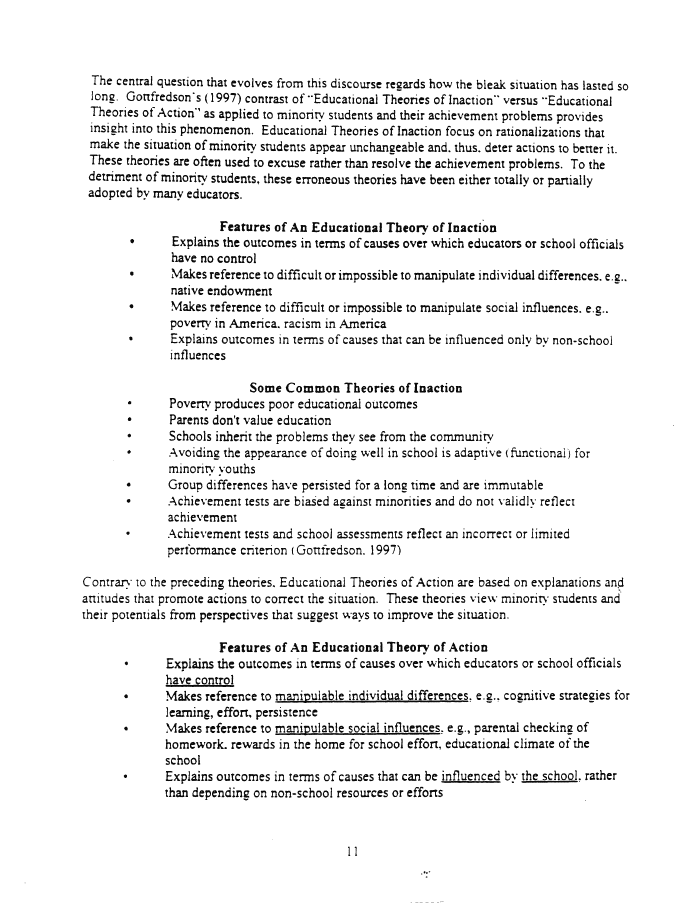 |
||||
|
TASK FORCE TO STUDY THE HISTORY AND LEGACY OF SLAVERY IN MARYLAND (Final Report) 1999/12/31 MdHR 991422 MdHR 991422, Image No: 190 Print image (66K) |
 |
||||
|
TASK FORCE TO STUDY THE HISTORY AND LEGACY OF SLAVERY IN MARYLAND (Final Report) 1999/12/31 MdHR 991422 MdHR 991422, Image No: 190 Print image (66K) |
| The central question that evolves from this discourse regards how the bleak situation has lasted so long. Gonfredson's (1997) contrast of "Educational Theories of Inaction" versus -Educational Theories ot Action'1 as applied to minonry students and their achievement problems provides insight into this phenomenon. Educational Theories of Inaction focus on rationalizations thai make the situation of minority students appear unchangeable and. thus, deter actions to better it. These theories are often used to excuse rather than resolve the achievement problems. To the detriment of minority students, these erroneous theories have been either totally or partially adopted by many educators. Features of An Educational Theory of Inaction • Explains the outcomes in terms of causes over which educators or school officials have no control • Makes reference to difficult or impossible to manipulate individual differences, e.g.. native endowment • Makes reference to difficult or impossible to manipulate social influences, e.g.. poverty in America, racism in America • Explains outcomes in terms of causes that can be influenced only by non-school influences Some Common Theories of Inaction Poverty produces poor educational outcomes • Parents don't value education • Schools inherit the problems they see from the community Avoiding the appearance of doing well in school is adaptive (functional) for minority youths • Group differences have persisted for a long time and are immutable • Achievement tests are biased against minorities and do not validly reflect achievement Achievement tests and school assessments reflect an incorrect or limited performance criterion (Gonfredson. 1997) Contrary to the preceding theories. Educational Theories of Action are based on explanations an.d amtudes thai promote actions to correct the situation. These theories view minority students and their potentials from perspectives thai suggest ways to improve the situation. Features of An Educational Theory of Action • Explains the outcomes in terms of causes over which educators or school officials have control • Makes reference to manipulable individual differences, e.g.. cognitive strategies for learning, effort, persistence • Makes reference to manipulable social influences, e.g., parental checking of homework, rewards in the home for school effort, educational climate of the school • Explains outcomes in terms of causes that can be influenced by the school, rather than depending on non-school resources or efforts II |